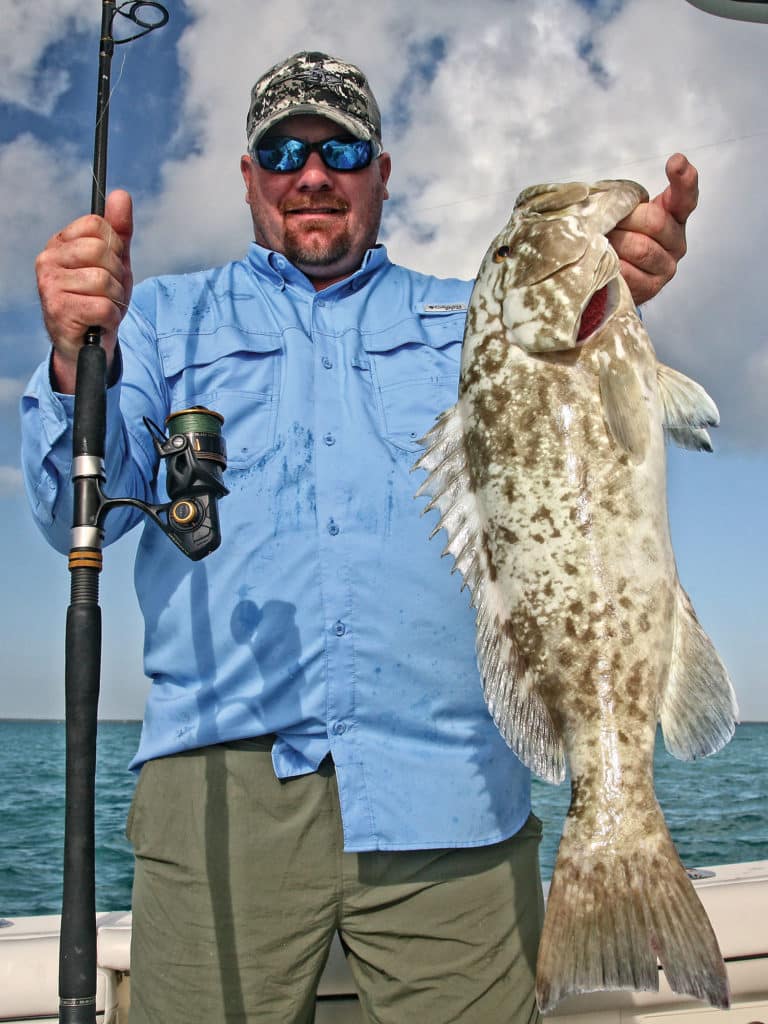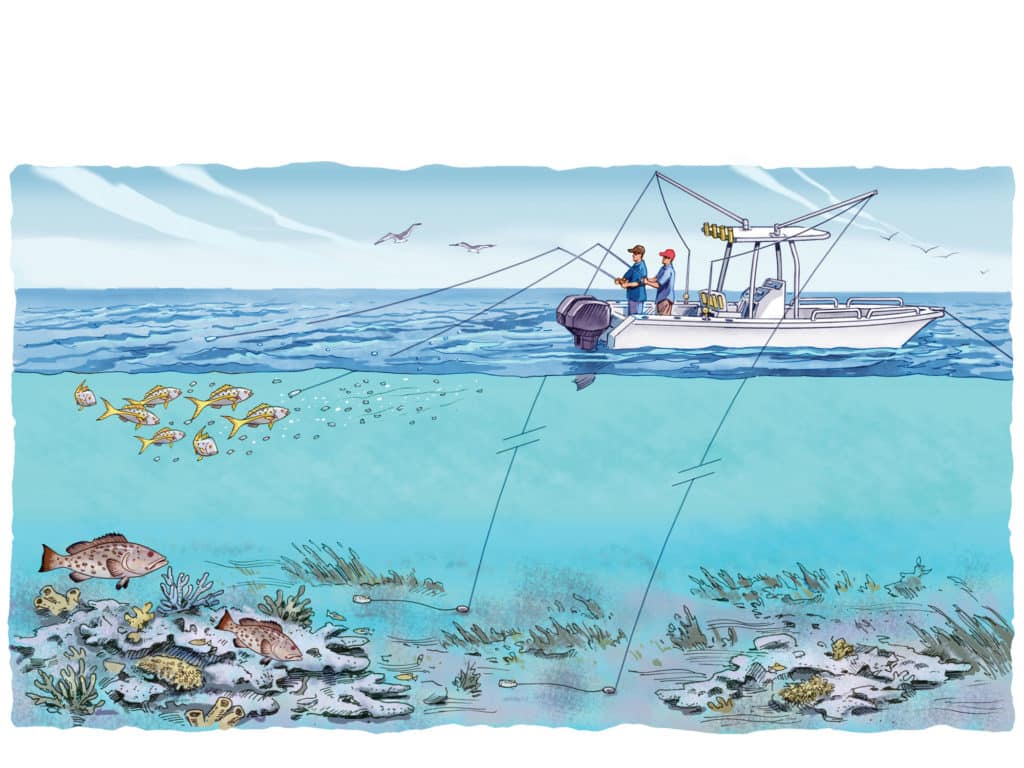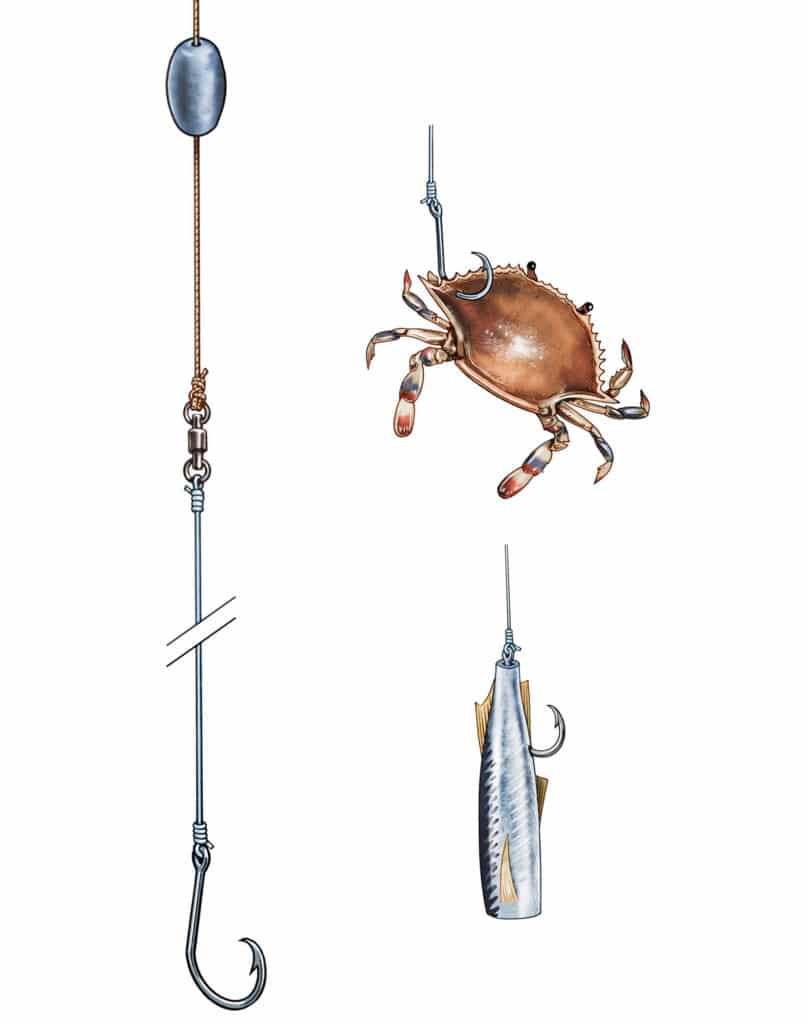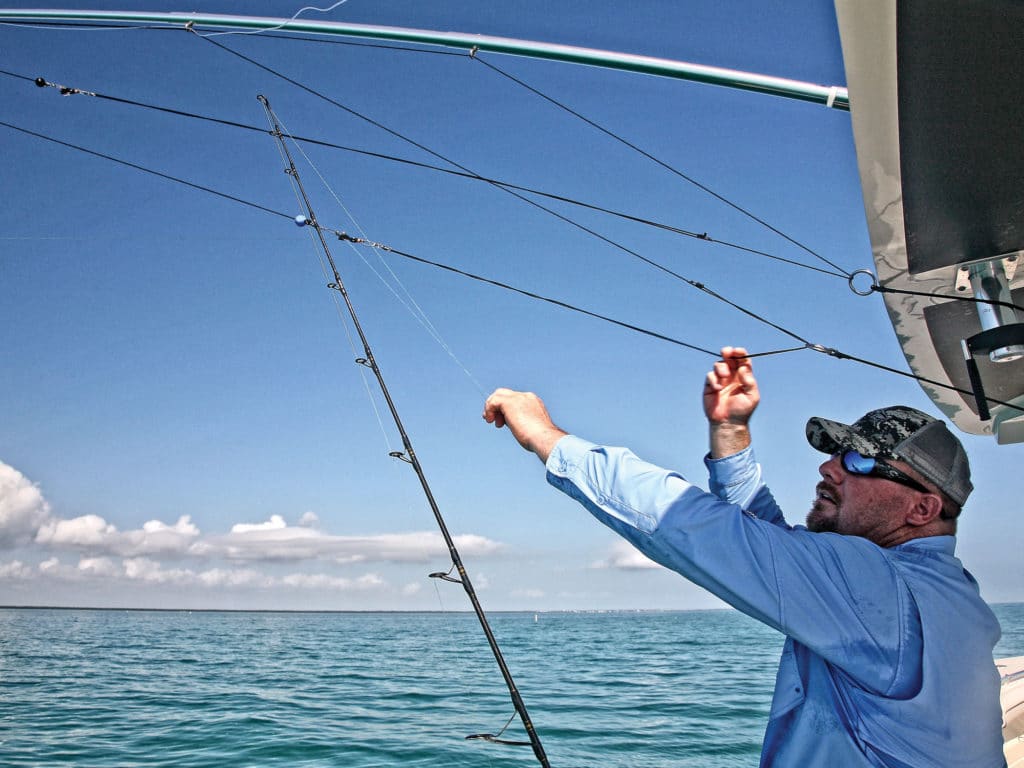
Gotcha!
I’m an offshore-trolling enthusiast who understands how to use outriggers to place baits and teasers. Yet I was bewildered when Capt. Kevin Jeffries asked me to swing out my 15-foot riggers after anchoring in 10 feet of water. We were setting up to fish the shallow patch reefs off northern Key Largo for hogfish, snapper and grouper.
Jeffries pitched a ballyhoo plug far back and to the right of a section of hard bottom some 50 feet behind us. He placed that outfit in a gunwale holder, attached the line to a release clip and sent it up the outrigger. Then he grabbed another rod and cast directly behind the boat, in more traditional, patch-fishing fashion.
Patch-reef fishing is a “feel” deal, where you hold the rod to detect subtle strikes and judge exactly when to wind and set the hook. It’s the polar opposite of dead-sticking a bait in 10 feet of water and with the line riding high in an outrigger clip.
As Jeffries explained, “When you fish directly behind the boat, like we’re doing now, just two baits are out there. By using outriggers, two additional baits can be added and positioned off to the sides. They won’t interfere at all with the lines we’re fishing, and sometimes they’ll catch the most impressive fish. We’re doubling our effort this way.”
As if on cue, the portside rigger line parted from its clip. Jeffries hastily placed his handheld outfit in a holder, grabbed the outrigger outfit, wound rapidly and came tight to a fish. In short order, he swung a nice mutton snapper into the boat. “It’s a good trick to catch muttons,” he said. “Muttons patrol the outer fringes of the patches. Sometimes they’ll push and peck at a bait several times before they’ll eat it.
The slack in the line from the outrigger keeps them from feeling unnatural resistance. The ballyhoo plug is durable enough to stay on the hook when muttons are investigating it. When one eats, the excess line falling from the release clip gives the fish plenty of time to take the bait deep.
When you come tight, chances are it’s solidly hooked; that is, unless it runs into the patches and breaks the line. The beauty here: All this transpires while you’re catching fish directly behind your boat.”
Jeffries has taken muttons, grouper, mangroves, mackerel and barracuda while bottomfishing with outriggers.

Set for Success
Variations
On our outing, Jeffries fished ballyhoo plugs from the outriggers. Yet he also fishes live pilchards and even crabs on the bottom from the outriggers. “Fish a bait you won’t have to change out or replace all the time like you would with live shrimp or small live baits, which get devoured by grunts and small mangrove snapper,” he explained. “Crabs are outstanding baits. Small fish won’t eat them. It may be a long time between strikes, but muttons, big mangroves and permit are distinct possibilities on this bait.”
For outrigger bottomfishing, Jeffries fabricates a 4-foot-long leader of 30-pound fluorocarbon with a small barrel swivel at one end and an in-line 2/0, 2X-strong circle hook at the other.

Bottom Winners
Before tying the swivel to the fishing line, he adds an egg sinker just heavy enough to hold bottom. This is his preferred ballyhoo plug and live-bait setup. The sinker holds the bait on bottom and, should a fish tug at the bait, the excess line slides through it. It’s a more stealthlike presentation compared to a knocker rig (sinker riding on a hook) where a fish may sense or feel the weight.
Beyond the Patches
I plan on expanding upon Jeffries’ patch-reef outrigger tactics for my deeper-water bottomfishing. For instance, when yellowtailing at anchor in 60 to 90 feet of water, I could see merit in sending down a weighted bait — a ballyhoo plug, fresh whole or sectioned goggle-eye, or even a live bait — and placing that rod in a holder just aft of midship and running that line up the outrigger clip.
As that line awaits a strike, we can continue yellowtailing in our typical fashion, straight behind the boat and with no extra rod in our way. Providing that the wind aligns with the current, the outrigger bottom baits should lie out evenly just beyond the transom. Our yellowtail lines will be well beyond and above those bottom lines, and even any knocker rigs we pitch into the chum slick. In essence, and as Jeffries explained, two additional rods will be working for us, without additional anglers or any interference.
Even while drifting over broken bottom or reefs, provided the boat is a center console and lying broadside, anglers can jig or spot-soak baits off the down-current side. Then an extra outfit can be fished off that outrigger simply by adding a bit more weight to hold it near bottom during the drift. A live bait rigged through the nostrils — so it swims with the boat — and even a fresh ballyhoo impaled on a heavy, deep jig are deadly alternatives.
Power drifting takes on a similar presentation: Anglers lower baits off the transom to rocks or a wreck while at least one rigger bait covers the area under the boat and aft of the anglers.

More in the Spread
Subtleties
Fine-tuning the release-clip setting is crucial. Do not overtighten; an excessively weighted line, along with a solid strike, may prove overbearing for an outrigger pole. The clip setting should be taut enough to hold the bait on bottom yet light enough so it releases easily on a solid pickup. The trick here is to cast or lower the rig assigned to the outrigger, then attach that line to the release clip; this way, the weight will rest on bottom where it’s not prone to tripping the clip.
With the bait on bottom, free-spool the reel as you advance the halyard with the release clip up the outrigger; doing so with the bail closed could trip the release clip. Then advance the drag and wind in most of the slack. Allow the line to slide back and forth on the clip. Place the rod in a holder and watch the line.
A windward line may eventually cross into your fishing space behind the transom. In this case, reset the rigger line. The downwind line usually remains in an ideal spot because it stays well away from the active angling at the transom.
Because the outrigger bottom baits aren’t monitored as efficiently as the ones you’re physically fishing, check them every 10 to 15 minutes or so. Fishing on credit is never a good idea.









